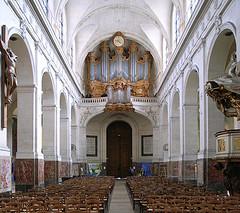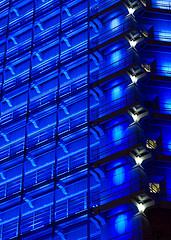Federal Registration Service
 Buyer must submit a written request to provide land ownership. After one month will be answered about the possibility of signing a contract of sale and purchase of land. Further, will need to order special topographical survey of the site, approve the project boundaries, to put a site on cadastre and land surveying to work on. After that the administration prepare a resolution on provision of land ownership, on the basis of which will be awarded the corresponding contract of sale and purchase of land. The second option – provides the order of registration of land in the presence of zemleotvodnyh original documents. This refers to areas designated for agriculture or suburban private housing construction on the property right, inheritable possession for life or unlimited use.
Buyer must submit a written request to provide land ownership. After one month will be answered about the possibility of signing a contract of sale and purchase of land. Further, will need to order special topographical survey of the site, approve the project boundaries, to put a site on cadastre and land surveying to work on. After that the administration prepare a resolution on provision of land ownership, on the basis of which will be awarded the corresponding contract of sale and purchase of land. The second option – provides the order of registration of land in the presence of zemleotvodnyh original documents. This refers to areas designated for agriculture or suburban private housing construction on the property right, inheritable possession for life or unlimited use.
Therefore, if a person has concluded a contract of sale and purchase of land and he has documents proving his right to land, he may issue a simplified procedure in section property. To do this he must make available documents to the Federal Registration Service, and attach the passport inventory of land. If the area has been increased, and its area is not corresponds to the original area, the citizen has the right to work on surveying and get to the property is actually occupied by the land area. Depending on the situation of the documents for registration land varies. May require any examinations, approvals and other procedures. But in any case it is necessary to obtain cadastral plan of the land and pass state registration of rights to land.
 There is nothing like his palaces, parks, fountains, sculptures and ponds. Versailles is only at the
There is nothing like his palaces, parks, fountains, sculptures and ponds. Versailles is only at the  Fixed capital by types of assets divided by the building and construction, machinery, equipment, vehicles and equipment and others. According to this classification are distinguished and the kinds of investments in fixed assets. Investment in buildings and facilities is the cost of construction of these facilities. Costs consist not only of payments for construction work, they also include other capital expenditures, for example, costs for the facility to operate, that is, the organization of communication within the facility, and others. Investment in accommodation costs are for construction of buildings for permanent human habitation.
Fixed capital by types of assets divided by the building and construction, machinery, equipment, vehicles and equipment and others. According to this classification are distinguished and the kinds of investments in fixed assets. Investment in buildings and facilities is the cost of construction of these facilities. Costs consist not only of payments for construction work, they also include other capital expenditures, for example, costs for the facility to operate, that is, the organization of communication within the facility, and others. Investment in accommodation costs are for construction of buildings for permanent human habitation.